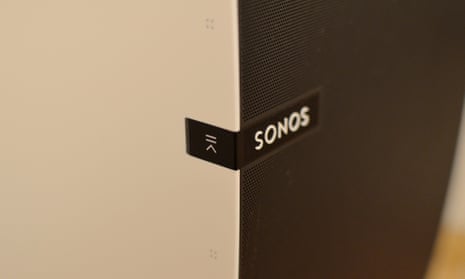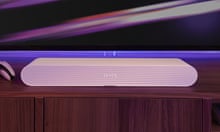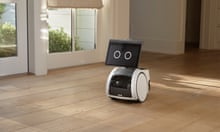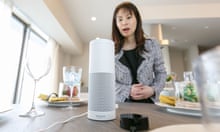Speaker company Sonos will cut off its most loyal customers from future software updates entirely unless they replace their old equipment for newer models, it has announced.
The policy is unusual even within the novelty-obsessed technology industry, for the scope of the impact: customers who have a range of Sonos products, including the Connect, Bridge and first-generation Play:5 speakers, will not only never be able to update those devices but will also be blocked from updating any newer device that is connected to them.
“We’re extremely proud of the fact that we build products that last a long time, and that listeners continue to enjoy them,” the company said in a blogpost announcing the move. “In fact, 92% of the products we’ve ever shipped are still in use today. That is unheard of in the world of consumer electronics. However, we’ve now come to a point where some of the oldest products have been stretched to their technical limits in terms of memory and processing power.”
Sonos makes speakers and associated hardware that can be networked into a multi-room audio system. Known for being comparatively expensive, the company’s products nonetheless have a devoted following of customers.
A freeze on software updates will initially have little effect, but over time it will eventually prevent the speakers from working at all, “particularly as partners evolve their technology”, Sonos said. Unmentioned is the cybersecurity impact: without software updates, security vulnerabilities will remain unfixed, putting users’ networks at risk if they do not replace their devices.
The company has come under particular fire for the types of devices included in the block. Many are the sort that are physically built into the homes of users, as part of a wired-in multi-room audio arrangement. Others, including the Play:5, are high-quality speakers that continue to work for their intended purpose, playing audio.
And while Sonos emphasised the age of the technology in its initial release, noting that some of the hardware was launched almost 20 years ago, the company did not acknowledge that the devices were sold to new customers much more recently. The first generation Play:5, a £500 speaker, was only replaced in 2015, and refurbished versions of were available from the company for some years after that.
The company offered an alternative solution for users who want to continue to receive software updates: enable Recycle Mode on their older hardware, a setting that Sonos launched to some controversy in November. When Recycle Mode is enabled, Sonos credits the owner with a voucher worth 30% of the cost of the device – then sends a software update that renders the hardware unusable in the future.
“Anyone even remotely familiar with recycling can tell you the mantra ‘reduce, reuse, recycle,’” one user argued. “Recycling takes energy and, while it saves materials, reuse is always better. Sonos is throwing any claimed environmental friendliness in the trash in order to sell more speakers.”
At the time, Sonos said that Recycle Mode was optional, for customers who felt that “having modern Sonos devices capable of delivering these new experiences is important”. It added, in replies to concerned customers, that “we have no plans to suddenly make these devices obsolete”.
In recent months, Sonos has become more aggressive about trying to maintain profitability in the face of tough competition from rival technology platforms such as Apple, Google and Amazon. As well as the decision to end support for some devices, the company also launched a lawsuit against Google, claiming that it stole Sonos’s intellectual property and used to launch its own smart speaker, the Google Home. Sonos would have sued Amazon for the same infringement, its CEO said, but it felt that it only had the resources to fight one legal battle at a time.
Sonos did not reply to requests for comment from the Guardian.









